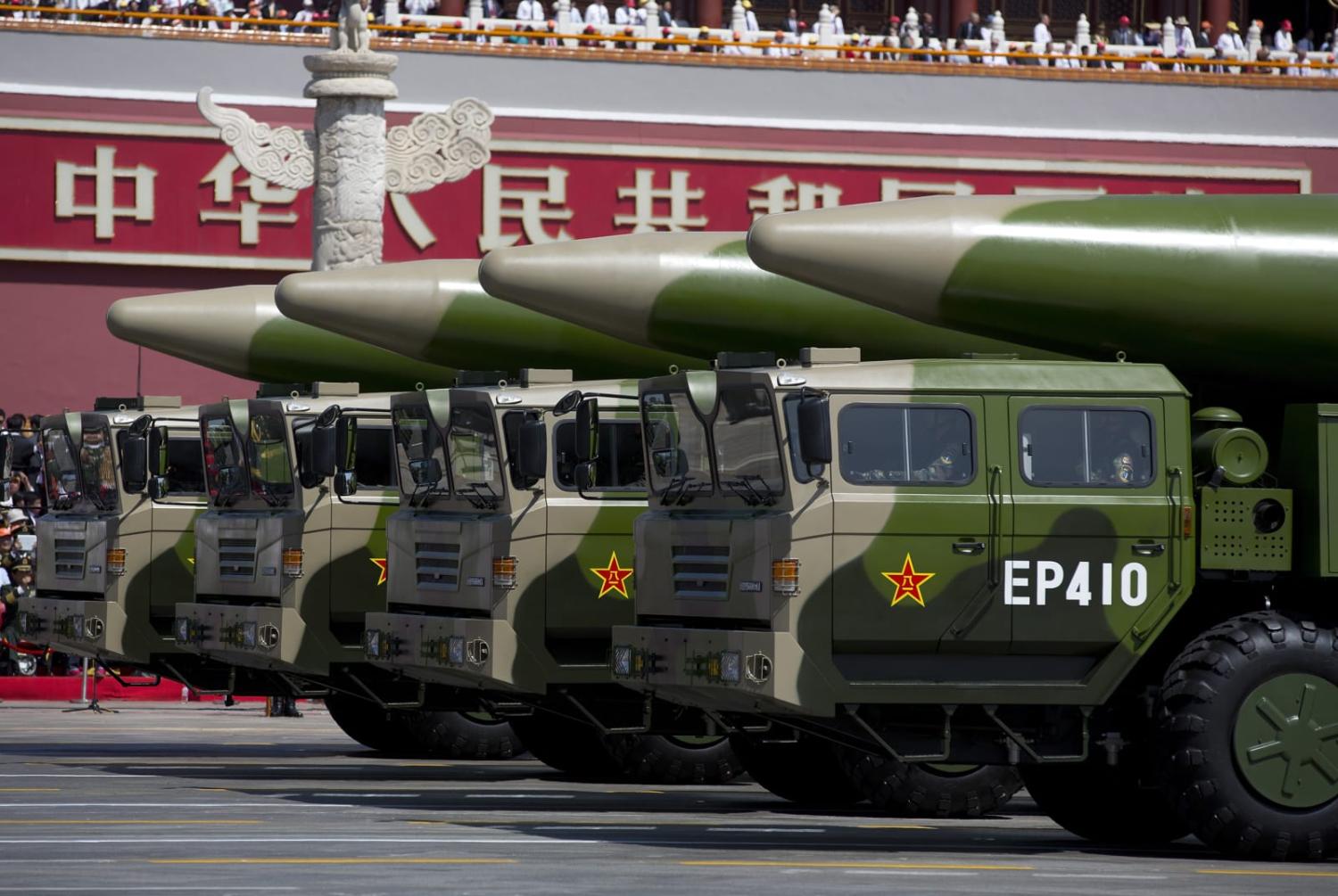The Bulletin of Atomic Scientists’ 2024 Nuclear Notebook estimates that China now has about 500 nuclear warheads, and more are being produced to equip future delivery systems. Of the nine nuclear-armed powers, China is thought to have one of the fastest-growing nuclear arsenals at present.
Last October, the US Department of Defence in its 2023 Annual Report made two forecasts: First, as of May 2023, China has more than 500 active nuclear weapons, exceeding earlier estimates. The 2022 report estimated that the stockpile had surpassed 400 nuclear warheads. Second, in keeping with its modernisation objectives, China is expected to have more than 1,000 operable nuclear weapons by 2030, many of which will probably be “deployed at higher readiness levels”.
And if China continues with the pace of its nuclear expansion, at the rate anticipated in 2022, China is likely to have a stockpile of about 1,500 warheads by 2035, the timeline by which the Chinese military plans to “basically complete modernisation”. The New York Times also reported in December last year that China may be preparing a military installation to “test a new generation of nuclear weapons”.
Any increase in China’s nuclear stockpile raises serious concerns, given the opaque nature of the country’s nuclear capabilities and its modernisation ambitions.
China’s increasing nuclear stockpile can be seen to be motivated by two factors: First, maintaining credible deterrence with other nuclear-armed states with which it is contesting, mainly the United States and India. And second, to improve its global standing, as a powerful country with a strong nuclear deterrence.
While China’s apparent goal of achieving nuclear parity with the United States and Russia is not supported by any concrete evidence, it is nonetheless important to consider this possibility while evaluating China’s nuclear modernisation. However, experts at the Federation of American Scientists (FAS) contend that, given the United States has 800 launchers for strategic nuclear weapons and a stockpile of 3,700 warheads, even if China ends up with more inter-continental ballistic missiles (ICBMs) than the United States and grows its nuclear arsenal to 1,500 warheads by 2035 as per Pentagon projections, that “does not give China parity”.
China’s nuclear policy adheres to the “no first use” principle, as the 2015 White Paper on “China’s Military Strategy” categorically states that China’s “national defence policy is defensive in nature, oppose[s] hegemonism and power politics in all forms, and will never seek hegemony or expansion.” However, its growing nuclear capabilities both in size and scope suggest otherwise. What is evident is a shift from minimum deterrence, which was once a preferred strategy, to now exhibiting signs of adopting a more advanced nuclear posture of “limited deterrence”. Analysts have explained this approach as being that if deterrence fails, this capability should be sufficient to control escalation and to compel the enemy to back down.
China has also upgraded the force structure from Second Artillery Force (SAF) to that of People’s Liberation Army Rocket Force (PLARF), which is heavily invested in modernising its nuclear forces by enhancing its silo-based ICBMs and adding more survivable, mobile delivery systems. According to China’s 2019 Defence White Paper, the PLARF is working towards: enhancing its credible and reliable capabilities of nuclear deterrence and counterattack, strengthening intermediate and long-range precision strike forces, and enhancing strategic counter-balance capability, to build a strong and modernised rocket force.
This was evident in 2018 when the PLARF commissioned the DF-26 ICBM into service, taking a significant leap in its military arsenal. The DF-26 has a range of up to 4,000 kilometres and the ability to carry a 1,200-1,800 kg nuclear or conventional warhead, allowing China to strike directly at the US territory of Guam or target ships at sea – seeing it dubbed as the “trump card” and a “new strategic tool” for the PLARF. The 2023 US Defence Department report suggests that:
[The People’s Republic of China] may be exploring development of conventionally-armed intercontinental range missile systems. If developed and fielded, such capabilities would allow the PRC to threaten conventional strikes against targets in the continental United States, Hawaii, and Alaska. Conventionally-armed ICBMs would present significant risks to strategic stability.
At present, China’s ICBM arsenal consists of approximately 350 ICBMs, which includes fixed and mobile launchers capable of launching unitary and multiple re-entry vehicles. Some sources indicate a “long-range” DF-27 ballistic missile is in development, which could be a new intermediate-range ballistic missile or ICBM. These developments suggest that the PLARF is not just a “provider” of key military capabilities but has become a “potential source of coercive leverage” for Beijing, which also acts as a “visible symbol” of China’s great-power status.
From China’s perspective, shifting estimates of what makes for a credible minimum deterrent are the cause of the nuclear force's structural and size variations. Also driving the change is the evolving security landscape and the growing foreign challenges China is facing. The long-standing Chinese policy of maintaining a small and survivable nuclear deterrent is no longer satisfactory for a rising China. Deng Xiaoping once stated that nuclear force enhancements were necessary “to earn more say and a higher international status in a coming world order”.

